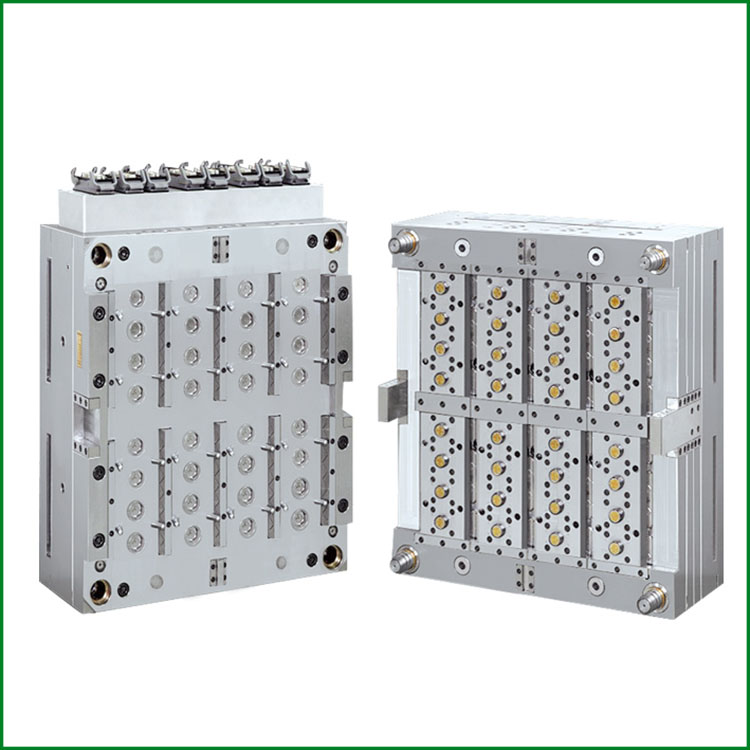Six methods of bottle cap mold polishing
With the increasing application of plastic products, such as daily-use cosmetic bottle caps and beverage packaging containers, the need for appearance often requires the surface of the plastic mold cavity to reach the degree of mirror polishing. Polishing not only increases the beauty of the workpie......
Send Inquiry
Product Description
With the increasing application of plastic products, such as daily-use cosmetic bottle caps and beverage packaging containers, the need for appearance often requires the surface of the plastic mold cavity to reach the degree of mirror polishing. Polishing not only increases the beauty of the workpiece, but also improves the corrosion resistance and wear resistance of the material surface. It can also make the mold have other advantages, such as making the plastic products easy to demould, reducing the production injection molding cycle, etc. Therefore, polishing is a very important process in the plastic mold making process. What are the polishing methods for the bottle cap mold?
1. Mechanical polishing
Mechanical polishing is a polishing method that removes the polished convex part by cutting and plastic deformation of the material surface to obtain a smooth surface. Generally, oilstone strips, wool wheels, sandpaper, etc. are used, and manual operations are mainly used. Special parts such as the surface of a rotating body can be polished. Using auxiliary tools such as turntables, ultra-fine grinding and polishing methods can be used for high surface quality requirements. Ultra-fine polishing is to use a special abrasive tool, that is pressed tightly on the surface of the workpiece to be processed in the polishing liquid containing abrasives for high-speed rotation. Using this technology, a surface roughness of Ra 0.008μm can be achieved, which is the highest among various polishing methods. Optical lens molds often use this method.
2. Chemical polishing
Chemical polishing is to make the microscopic convex part of the surface of the material dissolve preferentially compared with the concave part in the chemical medium, so as to obtain a smooth surface. The main advantage of this method is that it does not require complex equipment, can polish workpieces with complex shapes, and can polish many workpieces at the same time, with high efficiency. The core problem of chemical polishing is the preparation of polishing fluid. The surface roughness obtained by chemical polishing is generally several 10 μm.
3. Electropolishing
The basic principle of electrolytic polishing is the same as that of chemical polishing, that is, to make the surface smooth by selectively dissolving the tiny protrusions on the surface of the material. Compared with chemical polishing, it can eliminate the influence of cathode reaction, and the effect is better. The electrochemical polishing process is divided into two steps:
(1) Macroscopic leveling The dissolved product diffuses into the electrolyte, and the geometric roughness of the surface of the material decreases, Ra>1μm.
(2) Twilight smoothing Anodized, surface brightness improved, Ra<1μm.
4. Ultrasonic polishing
Put the workpiece into the abrasive suspension and put them together in the ultrasonic field, relying on the oscillation of the ultrasonic wave, the abrasive is ground and polished on the surface of the workpiece. Ultrasonic machining has a small macroscopic force and will not cause deformation of the workpiece, but it is difficult to manufacture and install tooling. Ultrasonic machining can be combined with chemical or electrochemical methods. On the basis of solution corrosion and electrolysis, ultrasonic vibration is applied to stir the solution, so that the dissolved products on the surface of the workpiece are separated, and the corrosion or electrolyte near the surface is uniform; the cavitation effect of ultrasonic waves in the liquid can also inhibit the corrosion process and facilitate surface brightening.
5. Fluid polishing
Fluid polishing relies on the high-speed flowing liquid and the abrasive grains it carries to scour the surface of the workpiece to achieve the purpose of polishing. Commonly used methods are: abrasive jet processing, liquid jet processing, hydrodynamic grinding, etc. Hydrodynamic grinding is driven by hydraulic pressure, so that the liquid medium carrying abrasive particles flows back and forth across the surface of the workpiece at high speed. The medium is mainly made of a special compound (polymer-like substance) with good flowability under relatively low pressure and mixed with abrasives. The abrasives can be silicon carbide powder.
6. Magnetic grinding and polishing
Magnetic grinding and polishing use magnetic abrasives to form abrasive brushes under the action of a magnetic field to grind the workpiece. This method has high processing efficiency, good quality, easy control over processing conditions, and good working conditions. With suitable abrasives, the surface roughness can reach Ra 0.1μm.
The polishing treatment of the bottle cap mold is not only to beautify the product, but also to make it invulnerable, so that the public can use it with more confidence.










